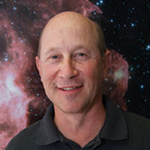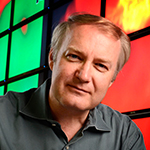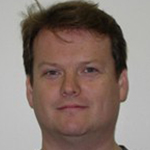Seminars are held at 4:00 PM on Tuesdays in Room F160
on the first floor of the Technological Institute (2145 Sheridan Road) unless otherwise noted
Fall Quarter 2009
| Date | Visitor / Seminar | Host | |
| Sept. 22 |  |
Enrico Ramirez-Ruiz Telltale signs of quiescent black holes include sharp spikes in the galaxy's light profile and the presence of stars that are moving anomalously fast near the galaxy's center. A black hole captures all stars within a critical radius, and a star that approaches the hole at small angles enters the tidal radius where it is torn apart, some of its gas falling into the hole. Stellar disruption may have interesting consequences in nearby galaxies if a moderately massive black hole lurks there. | Vicky Kalogera |
| Sept. 29 |
 |
Paolo Gondolo The first stars to form in the universe may have shined thanks to the energy coming from dark matter annihilation instead of nuclear fusion. They were dark-matter-powered stars, or for short Dark Stars. In this talk, I will describe the story of Dark Stars: how they formed, how they evolved, and how they might have died. |
André de Gouvêa |
Oct. 6 |
 |
Shirley Ho We present the first simulation of signatures of Baryon Acoustic Oscillations and Primordial Non-gaussianities on Lyman-alpha forest data containing mock quasar sight-lines. We use large dark-matter only simulations onto which we paint the Lyman alpha field using the fluctuating Gunn-Peterson approximation. We argue that this approach should be sufficient for the mean signature on the scales of interest. Our results indicate that Lyman alpha flux provides a good tracer of the underlying dark matter field on large scales and that redshift space distortions are well described by a simple linear theory prescription. We also investigate the effect of a fluctuating photo-ionizing background using a simplified model and show that both the signature of BAO and fnl are not affected by the fluctuating UV background when the amplitude of fluctuation is small. |
Mel Ulmer |
| Oct. 13 |
 |
Mark Reid Over 2000 years ago, Hipparcus measured the distance to the Moon by triangulation from two locations across the Mediterranean Sea. However, determining distances to stars proved much more difficult. Many of the best scientists of the 16th through 18th centuries attempted to measure stellar parallax, not only to determine the scale of the cosmos but also to test the Heliocentric cosmology. While these efforts failed, along the way they lead to many discoveries, including atmospheric refraction, precession, and aberration of light. It was not until the 19th century that Bessel measured the first stellar parallax. Distance measurement in astronomy remained a difficult problem even into the early 20th century, when the nature of galaxies ("spiral nebulae") was still debated. While we now know the distances of galaxies at the edge of the Universe, we have only just begun to measure distances accurately throughout the Milky Way. I will present new results on parallaxes and motions of star forming regions and the compact object at the center of the Milky Way. These measurements address fundamental problems in astrophysics, including evidence for supermassive black holes and the mass of the dark matter halo of the Milky Way. | Farhad Zadeh |
| Oct. 27 |  |
Tony Wong Observations of nearby galaxies have revealed a strong correlation between molecular gas mass and star formation rate (SFR), but a much weaker correlation between atomic gas and star formation. Indeed, outside of H_2-dominant regions, SFR correlates with stellar, not gas surface density. One possible explanation is that the rate of giant molecular cloud (GMC) formation is strongly influenced by the stellar potential well. Equilibrium models, such as those of Krumholz, McKee, & Tumlinson, have had some success at explaining the observed molecular gas fractions and star formation efficiencies in galaxies. However, they do not track the processes of GMC formation and destruction, so they implicitly assume that the bottleneck for star formation is in GMCs rather than the diffuse ISM. Using HI and CO observations of the Large Magellanic Cloud and other spiral galaxies, I discuss how the conditions for H_2 formation may be more complex than simple shielding models would indicate, requiring both high HI column density and relatively short dynamical timescales. New observations from the MAGMA CO survey of the LMC also call into question the assumption that the mass surface density and virial parameter of GMCs are nearly constant. |
Farhad Zadeh |
| Nov. 3 |  |
Bruce Balick Planetary nebulae (PNe) are bright, largely unobscured examples of stellar outflows. Their distances allow imaging studies on size scales of ~10 AU using HST, sufficient for resolving some shocks and monitoring pattern changes in structure over a decade. This, coupled with Doppler-shift maps, density, and temperature diagnostics, allow a good mapping of many hydrodynamic state variables. I shall review some of the hydro studies based on these measurables. On the other hand, the more we probe, the more complex PNe and their immediate antecedents appear, challenging our understanding of their outflow mechanisms, such as the role of nearby binaries and strong, local magnetic fields. My talk is a primer of the work in progress and the science opportunities to be enabled by new generations of instruments. |
Dave Meyer |
| Nov. 10 |
 |
Scott Gaudi I review the landscape of microlensing searches for exoplanets, beginning with an outline of the method itself, and continuing with a review of the results that have been obtained to date. Nine planets have been detected with microlensing; I discuss what these detections have taught us about the frequency of terrestrial planets, giant planets, and solar system analogs. I then speculate on the expected returns of next-generation microlensing experiments both from the ground and from space. When combined with the results from other complementary surveys, next generation microlensing surveys will yield a complete picture of the demographics of planetary systems throughout the Galaxy. |
Fred Rasio |
| Nov. 17 |  |
Volker Bromm How and when did the cosmic dark ages end? I present simulations of the formation of the first stars and galaxies, discuss their feedback on the intergalactic medium, and describe ways to probe their signature with missions such as WMAP and the James Webb Space Telescope. The properties of the first stars are determined by the interplay between cold dark matter and the atomic and molecular physics of hydrogen. I will identify the key processes and outline the major remaining uncertainties. |
Fred Rasio |
| Nov. 24 |  |
Steinn Sigurdsson The first stars formed from primordial gas, formed in the Big Bang, composed primarily of hydrogen and helium. It is generally thought the formation process of the first stars is relatively well understood, and leads to the formation of predominantly very massive stars. At some later stage, star formation in the universe appears to be dominated by a near universal Initial Mass Function, biased towards low mass stars, with an approximate power law dependence between the number of stars formed and their mass, over a factor of a few hundred in mass. We explore the effect of metallicity on fragmentation in cold low metallicity gas, using a new implementation of radiative cooling combined with adaptive mesh refinement simulations of the gas dynamics under gravity. Given some simplifying assumptions, we find a transition to the normal mode of star formation, evidence for an intermediate third mode of star formation, and discuss some of the physical issues and possible implications, including prospects for non-standard star formation modes in the present universe. |
Loren Hoffman |
| Dec. 1 |  |
Alessia Gualandris Near-infrared imaging and spectroscopy of the Galactic center indicate the presence of over 100 young massive stars in the inner parsec of the Milky Way. These belong to two distinct populations: (1) Outside the central arcsecond, a group of roughly 40 stars, mostly O and Wolf-Rayet stars with an estimated age of 6Myr, move on approximately circular orbits in a thin and coherent stellar disk. (2) Inside the central arcsecond, a group of 20 B-type stars (the S-stars) move on eccentric and randomly oriented orbits around the supermassive black hole (SMBH). The existence of young massive stars so close to the SMBH is puzzling since tidal stresses from the SMBH are likely to suppress star formation in this region. If the S-stars formed at larger distances from SgrA* and were then transported inward, the migration would need to occur on a timescale of only a few Myr, given the apparent age of the stars. This constitutes the so-called paradox of youth. I will discuss different models for the origin of the young stars in the Galactic center and present recent results obtained by means of state-of-art numerical simulations. I will also discuss the short and long term effects of an intermediate-mass black hole on the orbits of the stars bound to the SMBH. |
Fred Rasio |
| Dec. 8 |  |
Zhi-Yun Li Stars form in molecular clouds that are both turbulent and magnetized. However, the roles of turbulence and magnetic fields in star formation are still under debate. In this talk, I will use magnetodyhrodynamic (MHD) simulations to illustrate the role of turbulence in the formation of star clusters, including feedback from protostellar outflows and the role of magnetic fields in the formation of protostellar disks, including non-ideal MHD effects (such as ohmic dissipation and ambipolar diffusion). I will show that the majority of stars, especially massive stars, are probably formed in outflow-driven turbulence, and that under realistic conditions magnetic braking is strong enough to suppress disk formation. When and how disks form during star formation remains a mystery. |
Giles Novak |
Past Astrophysics Seminars